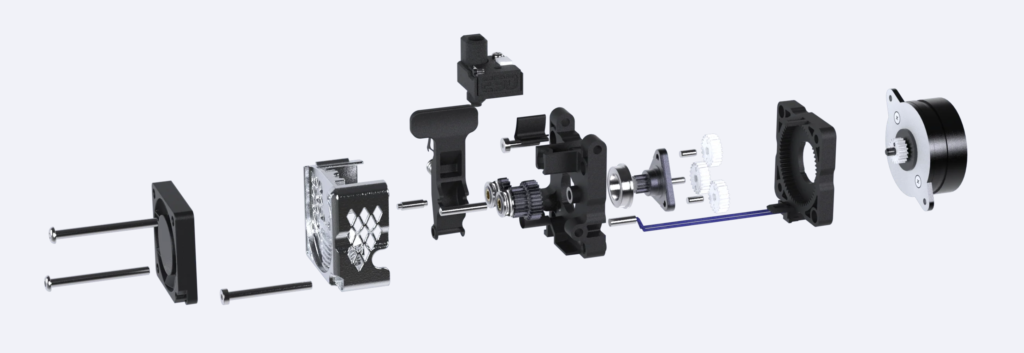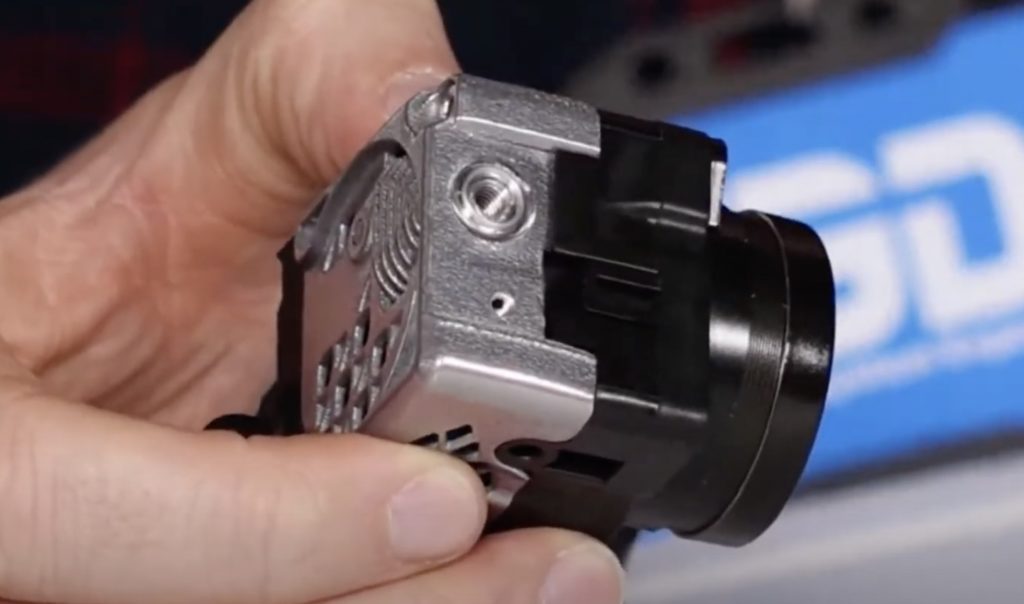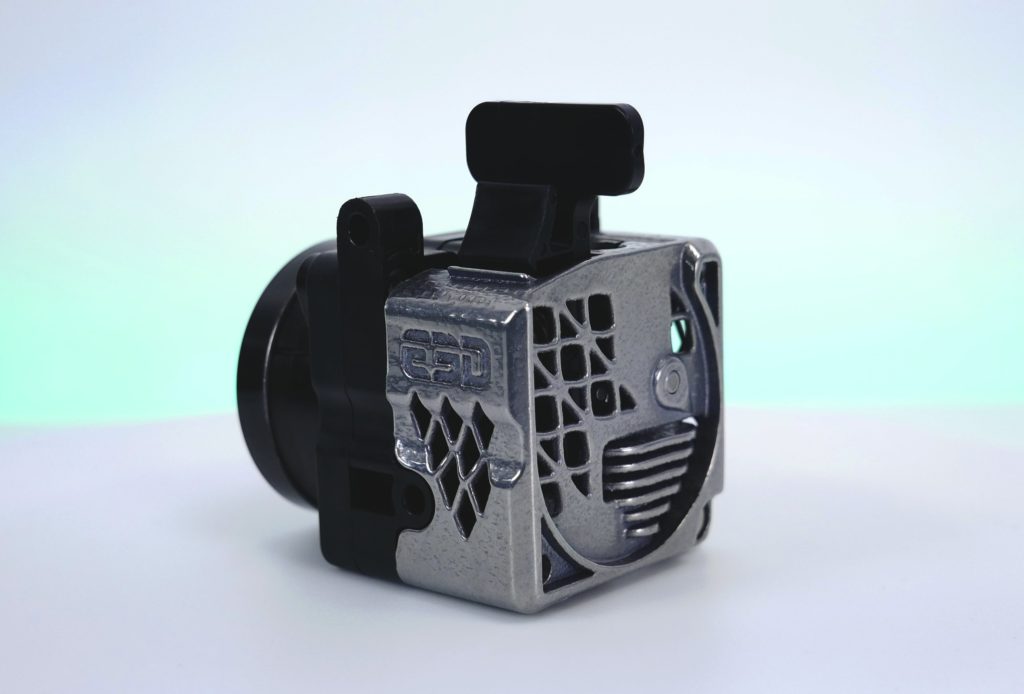Updated 2nd of December to include announced prices.
Formnext is always an exciting event with many companies showing off their new products, and this year is no different. Joel Telling from the 3D Printing Nerd YouTube channel visited Frankfurt for Formnext 2023 and held a livestream with many companies dropping by to showcase their 3D printing tech. Among them was E3D, who beyond the Diamondback and high-flow Obxidian Revo nozzles, revealed a new Revo-based system, the Roto extruder.
What is the Roto extruder?

Roto is an integrated extruder assembly consisting of the extruder hardware, a motor, and a heatsink for Revo hotends, all for 140 grams! The heatsink is actually 3D printed aluminium in a complex geometry that would be difficult to machine otherwise.
The extruder itself is a planetary gearbox with dual hobb gears, which should provide ample grip on the filament. This joins recently-released Prusa’s MK4 Nextruder, Sovol’s SV06 extruder, and the new Galileo 2 extruder from the Voron team: this growing number of planetary gearbox extruders suggests that they’re here to stay. According to E3D’s page, Roto has enough extrusion force to be used in tandem with high flow nozzles, and a high flow hotside package consisting of a 60W heater core with a 0.6mm high flow nozzle is available for £76.40 (you can always spring for a 40W heatercore and a nozzle of your choice by browsing their spare parts listings).
On the 1st of December, E3D began selling the Roto, with a base price of £115 for the standard and bowden versions, while the “sensored” edition currently sells for £155 (see below for details).
Plenty of quirky features

One unique feature designed into the heatsink assembly is the tunneling of some of the air from the hotend fan back down towards the heat break. This is an interesting approach to limit the thermal load the heatsink has to dissipate to begin with, and E3D says Roto is “the most thermally efficient heatsink they’ve ever produced”.
The Roto extruder is also built to be smart. Elements built into its assembly (like a grub screw hole on the underside) allow users to install sensors such as thermistors to monitor the heatsink temperature. The heatsink is not the only 3D printed part on Roto, as an MJF (Multi Jet Fusion) printed filament sensor sits at the top of the extruder. You’d think this makes Roto smart enough, but the engineers at E3D also managed to add a programmable action button that runs a GCODE macro on the printer, allowing you to run an automated filament unload.
A final feature worth mentioning is the bi-stable idler toggled with a flexure arm on the top. It either sets the hobb gears in a preset tension for printing or opens the gears apart. The flexure arm rides over a ridge of the heatsink, and in the ‘printing’ position it is always in a predetermined tension. This allows for easy, one-handed filament swaps and cold pulls.The flexure arm joins E3D’s previous efforts to increase user friendliness, like the one-handed cold nozzle swaps of the Revo system. It is an important step in enabling users with varying hand dexterities to work with 3D printers.
Thoughts on Roto
E3D’s Roto extruder is definitely a refreshing proposition, being so different from what we are used to when we think of extruders. Given the price tag, these quirks and user-friendliness don’t exactly come cheap, but they’ve got potential. Since the base version costs around £115, it is significantly more expensive compared to other lightweight extruders, such as the Sherpa Mini, Orbiter 2, Galileo 2 Standalone or LGX Lite.
E3D has yet to talk about mounting options for direct drive configurations. When mounted in a direct drive configuration, the Hemera resulted in loss of X travel on some printers. Since the Roto maintains the hotend heatsink in line with the extruder in the X axis, it will be interesting to see the mounting methods users employ.
Another question is how well Roto handles flexibles as the bi-stable lever hasn’t been mentioned to have a flexibles state. It is common practice to release the tensioner screw of the idler when printing flexibles, as otherwise the filament could bind. In contrast, its competitor, the LGX Lite, has three stages for its lever, an open state, a printing state, and a flexibles printing stage (from left to right).
E3D mentioned in Joel Telling’s livestream that it will be out in time to be installed in printers by Christmas and you can register your interest for E3D’s Roto here.
[Header image from the E3D’s X(Twitter) post on Roto found here.]

